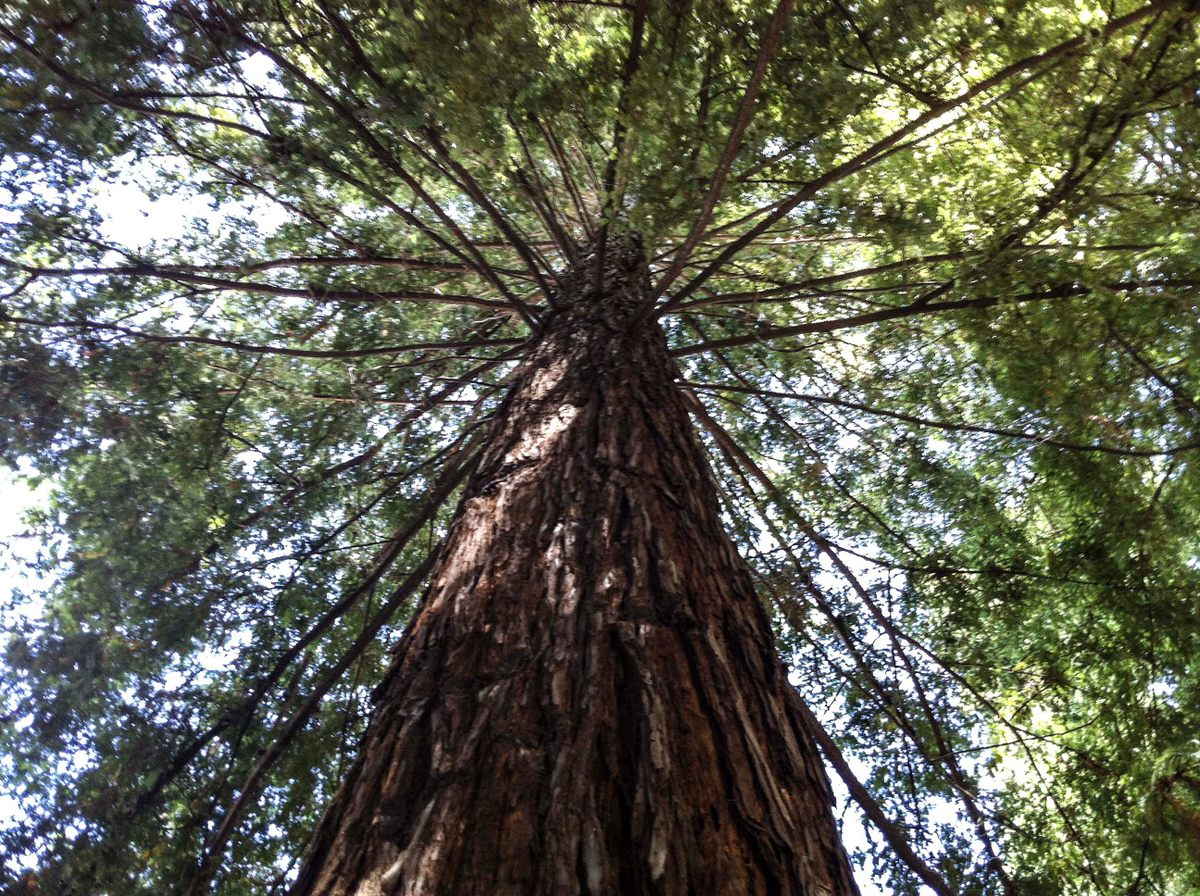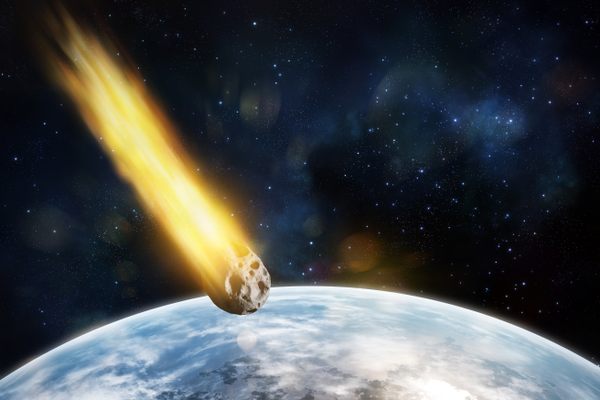Whatever Happened to All the Moon Trees?
Sprouted from seeds that traveled to space in 1971, many haven’t fared so well back on Earth.
The Moon is not an easy place to be a living thing. The little cotton seeds that germinated on the far side of the Moon recently, aboard China’s Chang’e-4 lander, died soon after. The water, oxygen, soil, and heat source inside their cozy biosphere were no match for the Moon’s version of night—two weeks of darkness and temperatures reportedly dipping down to -310 degrees Fahrenheit.
That’s not to say it isn’t possible for plants to grow off-world. Astronauts aboard the International Space Station tend and sometimes harvest and eat romaine lettuce, cabbage, and more from carefully calibrated chambers. And while the Chang’e-4 experiment marked the first time that humans have sprouted something on the Moon, our rocky satellite was involved in another case of lunar gardening, in the form of seeds that went to the Moon and were brought back to Earth. Turns out many of those “Moon Trees,” as they are known, have had a bit of a rough go of it.
In 1971, just before he blasted off with Apollo 14, astronaut Stuart Roosa—who had formerly worked as a smokejumper for the U.S. Forest Service—stashed several hundred seeds from redwoods, loblolly pines, sweetgums, sycamores, and firs in his personal kit (the small tube in which crew members can stow sentimental stuff unrelated to the mission). The seeds got little attention at the time, amid the bigger buzz around the mission and the general sense of cautious optimism combined with fear that followed the heroic but troubled experience of the Apollo 13 astronauts.
The seeds spent a total of nine days in space, and when the Apollo 14 crew splashed back to Earth, the seeds did, too, with little fanfare. With the exception of a few internal documents, “I never found anything from the time the mission went up,” says Dave Williams, an archivist at NASA’s Goddard Space Flight Center who has become the de facto chronicler of the seeds’ journey. “No one had heard about these even for some time afterwards, until they planted them.”

The U.S. Forest Service watched over the seeds until they sprouted, and once they had grown hardy enough, seedlings were fanned out across the country to be planted. (There may have been a rush to germinate as many of them as possible, as quickly as possible, out of fear that they’d been ruined when the canister holding them popped open during quarantine.) In 1975 and 1976, local papers from Las Vegas, Nevada, to Huntsville, Alabama, reported on astronauts, politicians, and other public figures dropping by to help place the 18-inch sycamores or foot-tall pines into their new homes in parks, squares, and other sites in honor of America’s bicentennial. Some other seedlings were planted a few years on, and in at least one case, when a much-less-photogenic root clipping arrived instead of a seedling, an entirely different tree stood in until the handsomer version of the Moon Tree was ready to be planted later.
There was something heroic in trees grown from seeds that had traveled so far from home. They were cast as a testament to innovation, engineering, and ingenuity—fragile things that Americans had successfully shepherded through a cold, dark trip. The trees were also emblems of what makes Earth stand out in the solar system. They were often planted alongside patriotic plaques that said things like, “America’s Green World of Trees.” The sturdy, iconic species celebrated our lush, leafy existence.

The problem is that once they’d been planted, many people forgot about them—including many people at NASA.
The NASA archivist Williams didn’t know anything about the Moon Trees until the mid-1990s, when he was making early webpages to showcase information about previous missions and data. He listed an email address on pages relating to Apollo missions, and that’s how a third-grade teacher from Indiana reached him with a question about the trees. Her kids wanted to know about a tree they’d spotted at a nearby Girl Scout camp, with a little sign that identified it as a “Moon Tree.”

At first, he didn’t really have any information to offer. “I had never heard of them!” Williams says. So he started poking around, “and slowly, this little story started coming together.” He learned that there was one near his own office, close to the visitors’ center at Goddard. He’d had no idea it was there. “That’s why I’m not running a detective agency,” he says. A Moon sycamore was “planted practically in my backyard, and I didn’t even know about it.”
Williams decided to make a webpage about Roosa’s seeds, and at the bottom he invited people to get in touch if they knew anything about Moon Trees in their neck of the woods. The emails started pouring in. People might say that their dad had planted one, or that they’d stumbled across one in a park. “It sort of kept growing, and I became the Moon Tree guy,” Williams says.
Williams still keeps tabs on the status of the known Moon Trees. It’s not known exactly how many seeds Roosa took to the Moon, or how many sprouted, or how many eventually took root in the ground, but there are roughly 90 trees currently accounted for, and about a third of those are already dead. The spindly sycamore in Philadelphia’s Washington Square, its trunk no wider than a fist, is a clone of the park’s original Moon Tree. The long-leaf pine near the “Moon Tree” plaque at the G. W. Andrews Forest Services Laboratory Research Station in Auburn, Alabama, is not actually a Moon Tree, but replaced a loblolly pine that was. In 1980, an Indiana paper reported that a Moon sycamore in Niles, Michigan, was still going strong, four years after it went in the ground. It had shot up by four feet since it was planted, the paper noted, but its three Michigan cousins all perished.

The fate of many of these trees likely has nothing to do with their jaunt to the Moon, Williams says. Compared with seeds that never blasted off, “there was no detectable difference at all, which is what anyone would have expected.” He imagines that a longer spaceflight—with more exposure to radiation and zero-gravity—might have changed them, but this particular journey resulted in perfectly average seeds with a cool stamp on their extraterrestrial passports.
Far more important was what happened to these seeds once they returned to Earth and sprouted. Williams was never able to find information about how many were planted, and it’s possible that many died in the first year or two—a time when transplanted trees are especially vulnerable to being parched, infested, or toppled. Speaking to Indiana’s South Bend Tribune in 1980, the director of the nature preserve that housed Michigan’s surviving Moon Tree speculated that some of the others had been in for a shock when they moved from the place they were sprouted—often in Mississippi or California—to where they were planted, particularly if the climates differed.
Think of it this way: The trees that you find in a given place are, by definition, the ones that survived by some luck of sunlight and soil and freedom from accidents or disease. Birds and wind drop seeds in all sorts of places, and lots of these seeds might even sprout, but the vast majority never survive long enough to become trees. Any Moon Tree planted in a decent spot probably had the same chance as any other seedling, Williams says, but surely, “not everyone who planted them knew what they were doing.” They may have chosen a spot that was pretty, or central, but not the right fit for that particular tree. Others might have been uprooted up by accident. That fate befell the sycamore planted near the Wyoming Police Department in Michigan, which was destroyed during construction.

As anyone who has cycled through houseplants knows, it can be hard to keep something alive, and the same is true for histories. Williams still gets a trickle of emails about the trees, particularly when they die, but he also suspects that there are many that have simply been forgotten. If a plaque vanishes, a legacy can disappear with it, and even established trees are still vulnerable. In New Orleans, for instance, a Moon pine was removed after sustaining damage in Hurricane Katrina. (It’s not clear that the damage was the reason for removing the tree, Williams notes, but it—and its plaque—disappeared sometime between December 2005 and August 2006, and he’s not sure what happened to them.) But some Moon Trees do live on in various ways. Some second-generation trees—spawned from seeds or cuttings—have gone into the ground more recently, including a sycamore dedicated at Arlington National Cemetery in 2005, in honor of Roosa (who died in 1994) and “other distinguished astronauts who have departed our presence here on Earth.” Williams has a second-generation Moon Tree in his yard at home, too—a sycamore from a ceremony at the National Arboretum.
We owe much of what we know about the charming mystery of the Moon Trees to Williams’s willingness to do some sleuthing, and enthusiasm for collating dispatches from other people who love them—everyone from Forest Service employees to folks who document them in their neighborhoods, or go out of their way to find them. Like hundreds of thousands of other federal employees, he spent much of January 2019 furloughed by the government shutdown, and returned to work to find an avalanche of emails. More than a thousand of them had piled up, and one of those could hold the first piece of a new puzzle. He does his best to respond to everyone, but it’s not always possible to dig deep into each question. “I think back and think I could have just as easily said, ‘No, I’ve never heard of them [the Moon Trees], I’m sorry,’” Williams says. Thanks in large part to him, the story has been able to take root again.


















Follow us on Twitter to get the latest on the world's hidden wonders.
Like us on Facebook to get the latest on the world's hidden wonders.
Follow us on Twitter Like us on Facebook